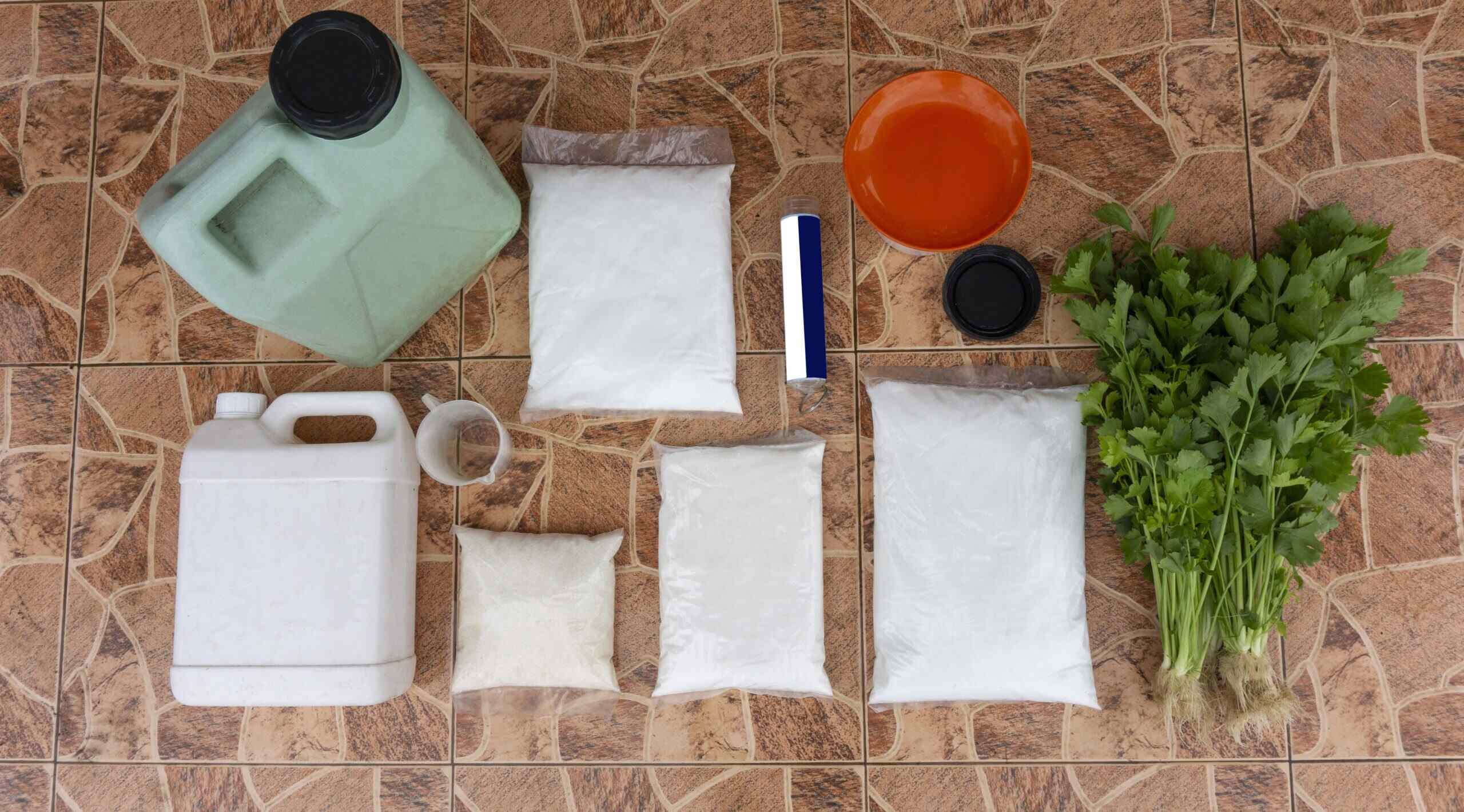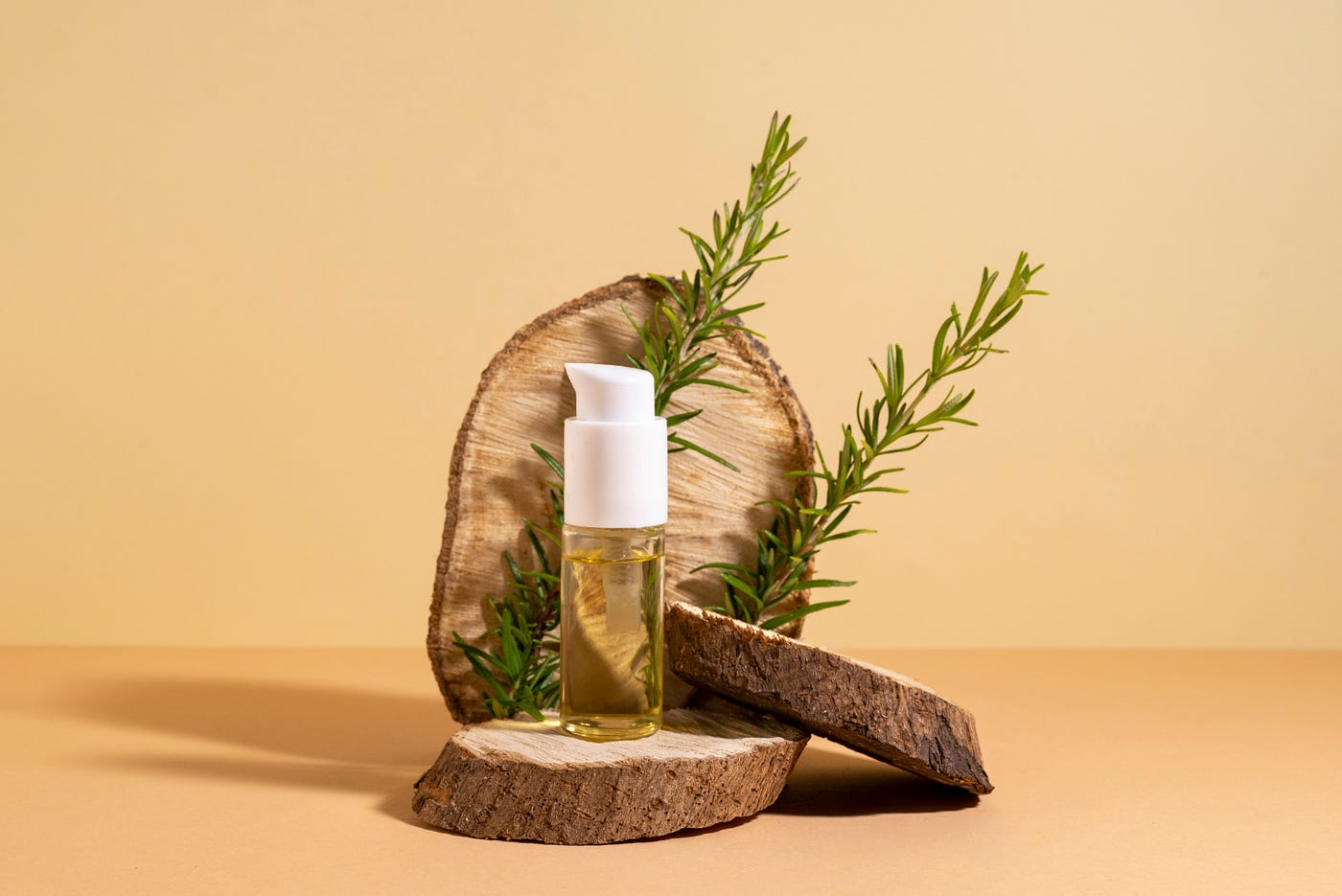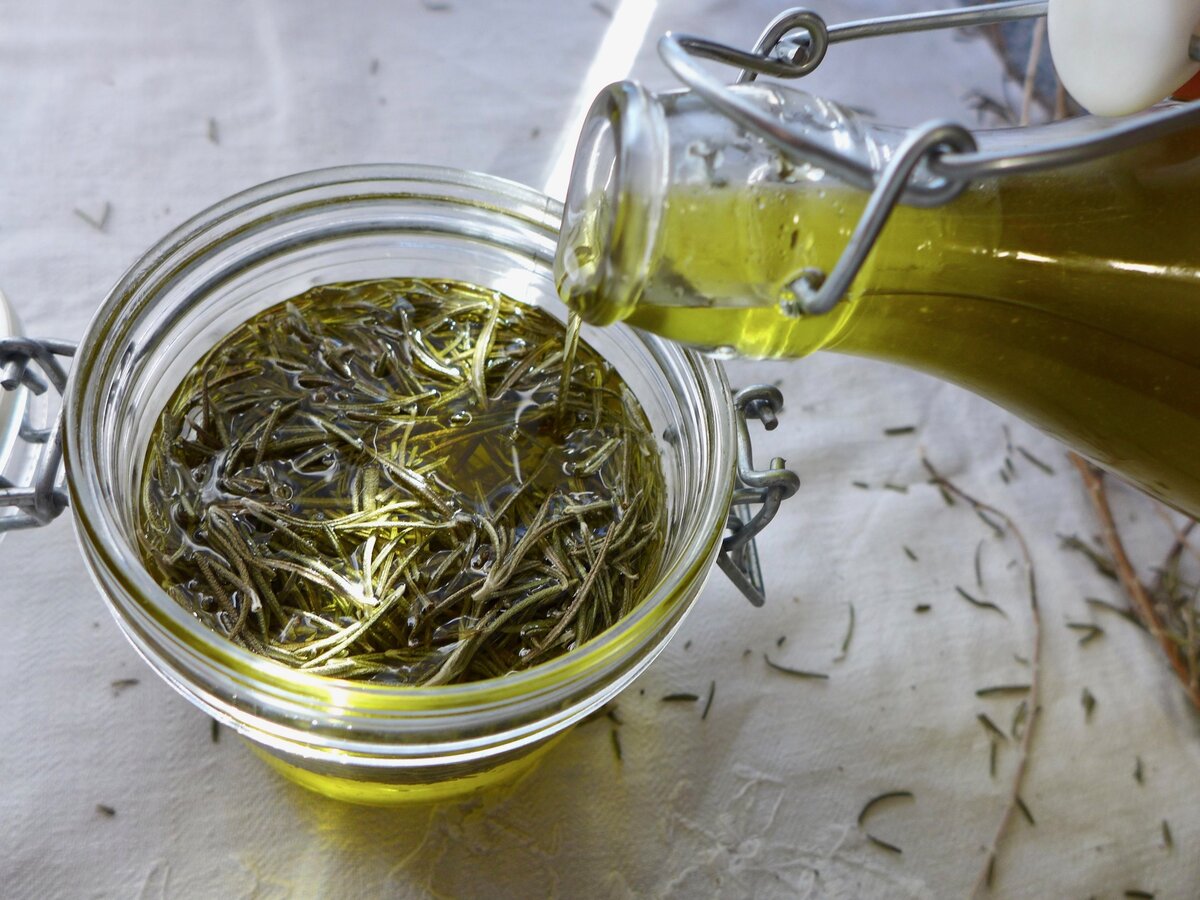Home>Gardening Techniques>DIY Projects>How To Make Rosemary Water For Fleas


DIY Projects
How To Make Rosemary Water For Fleas
Published: February 1, 2024
Discover an easy DIY project to make rosemary water for fleas. Learn how to effectively repel fleas using natural ingredients and protect your pets
(Many of the links in this article redirect to a specific reviewed product. Your purchase of these products through affiliate links helps to generate commission for Chicagolandgardening.com, at no extra cost. Learn more)
Table of Contents
Introduction
Welcome to the world of DIY pest control! If you’re dealing with pesky fleas in your home and want to find a natural and effective solution, you’ve come to the right place. In this article, we’ll explore the wonders of rosemary water and how it can help you combat flea infestations.
Fleas can be a major nuisance, causing discomfort for both humans and their furry companions. While there are numerous commercial products available, many of them contain harsh chemicals that may pose risks to your health and the environment. Fortunately, there is a natural and cost-effective alternative – rosemary water.
Rosemary, a fragrant herb commonly used in cooking and aromatherapy, has been found to have powerful properties that repel fleas and other insects. It contains compounds like camphor, cineol, and rosmarinic acid, which are known to be effective against fleas.
In addition to being a natural flea repellent, rosemary has numerous other benefits. It is rich in antioxidants, anti-inflammatory agents, and vitamins, making it an excellent addition to your DIY pest control arsenal. Plus, its refreshing scent can help create a pleasant ambiance in your home.
In this article, we’ll guide you through the process of making rosemary water for fleas, including the supplies you’ll need and the step-by-step method of preparation. We’ll also provide instructions on how to apply the rosemary water and share some precautions to ensure safe and effective use.
Get ready to say goodbye to those annoying fleas and hello to a naturally pest-free home with the power of rosemary water. Let’s dive in and discover the secret to DIY flea control!
Benefits of Rosemary Water for Fleas
The use of rosemary water for fleas offers a plethora of benefits that make it an excellent choice for natural pest control. Let’s explore the various advantages of using rosemary water to combat fleas in your home.
- Natural Flea Repellent: Rosemary contains compounds like camphor and cineol, which are known for their repelling effects on fleas. When used as a spray or rinse, rosemary water can help deter fleas from infesting your pets and home.
- Safe for Pets and Humans: Unlike commercial flea control products that often contain harsh chemicals, rosemary water is a natural alternative that poses no risks to the health of your pets or your family. It is a gentle and non-toxic option that can be used without worry.
- Environmentally Friendly: By choosing rosemary water for flea control, you are opting for an eco-friendly solution. It eliminates the need for chemical-based flea repellents that can harm the environment, pollute water sources, and impact wildlife.
- Affordable: Making rosemary water is cost-effective and budget-friendly. Rosemary is a common herb found in grocery stores or can even be grown in your garden. By using this natural remedy, you can save money on expensive commercial flea control products.
- Multi-Purpose Use: Along with its flea-repelling properties, rosemary water offers additional benefits. It can help soothe irritated skin, reduce inflammation, and promote healthy hair growth. This makes it a versatile option for pet care.
- Pleasant Fragrance: Rosemary has a refreshing and invigorating scent that can add a pleasant aroma to your home. By using rosemary water for flea control, you not only tackle the pest problem but also create a more enjoyable environment for you and your pets.
With these incredible benefits, it’s no wonder why rosemary water is gaining popularity as a natural remedy for flea control. Now, let’s move on to the next section to discover what supplies you’ll need to prepare your own rosemary water.
Supplies Needed
Before you can start making rosemary water for flea control, it’s important to gather all the necessary supplies. Fortunately, you don’t need a long list of items – just a few simple ones that are easily accessible. Here’s what you’ll need:
- Fresh Rosemary: Look for fresh rosemary sprigs, preferably organic, as they are free from pesticides. You can find rosemary at your local grocery store, farmer’s market, or even grow it in your own garden.
- Water: Use clean, preferably filtered water for making rosemary water. Avoid using chlorinated tap water as it may affect the quality and effectiveness of the final product.
- A Pot with Lid: You’ll need a pot to boil the water and infuse the rosemary. Choose a pot with a lid to help retain the essential oils and fragrance of the rosemary.
- Strainer or Cheesecloth: After boiling the rosemary, you’ll need a strainer or cheesecloth to separate the liquid from the solid particles. This will ensure a smooth and clean rosemary water.
- Spray Bottle or Container: To apply the rosemary water, you’ll need a spray bottle or a container with a nozzle. This will allow you to easily distribute the water onto your pets or areas where fleas are present.
- Optional: Essential Oils (Lavender, Eucalyptus, etc.): While not necessary, you can enhance the flea-repelling properties of rosemary water by adding a few drops of essential oils like lavender or eucalyptus. These oils have their own natural insect-repelling benefits.
Once you have gathered these supplies, you’re all set to start preparing your rosemary water. In the next section, we’ll guide you through the step-by-step method of making rosemary water for effective flea control.
Method of Preparation
Now that you have all the necessary supplies ready, it’s time to prepare your own rosemary water for flea control. Follow these simple steps to make an effective and natural solution:
- Start by rinsing the fresh rosemary sprigs under cold running water to remove any dirt or debris. Pat them dry with a clean towel.
- Fill a pot with about 4 cups of water. Place it on the stove and bring the water to a boil.
- Once the water is boiling, add the rinsed rosemary sprigs to the pot. Reduce the heat to low and cover the pot with a lid.
- Allow the rosemary to simmer in the water for about 30 minutes. This will help release the essential oils and other beneficial compounds into the water.
- After simmering, turn off the heat and let the rosemary water cool down completely. Leave the lid on to preserve the aromatic properties.
- Once the rosemary water has cooled, strain it using a fine mesh strainer or cheesecloth to separate the liquid from the solid particles. Discard the rosemary sprigs.
- Your rosemary water is now ready to use! Transfer it to a spray bottle or container with a nozzle for easy application.
Remember, you can also add a few drops of essential oils like lavender or eucalyptus to enhance the flea-repelling properties of the rosemary water. Simply mix the essential oils into the prepared rosemary water before transferring it to the spray bottle.
Now that you have learned the method of preparing rosemary water, it’s time to explore how to effectively apply it to combat fleas in your home. Read on to the next section for detailed instructions on using rosemary water for flea control.
Application of Rosemary Water
Now that you’ve successfully prepared your rosemary water, it’s time to put it to good use and tackle those fleas. Here are some effective ways to apply rosemary water for flea control:
- Pet Rinse: Fill a basin or sink with warm water and add a sufficient amount of rosemary water. Gently immerse your pet in the water and use your hands or a washcloth to thoroughly wet their fur. Ensure that the rosemary water reaches the skin as well. Massage your pet’s fur for a few minutes, allowing the rosemary water to penetrate. Rinse your pet with clean water afterward and pat them dry.
- Bedding Spray: Fleas often hide in your pet’s bedding, so it’s crucial to address this area as well. Fill a spray bottle with rosemary water and generously spray it onto your pet’s bedding. Pay close attention to crevices, corners, and areas where fleas might hide. Allow the bedding to air dry or dry it in the sun. Repeat this process regularly, especially if your pet spends a significant amount of time on their bed.
- Furniture and Carpet Spray: Fleas can also infest your furniture and carpets, so it’s important to treat these areas too. Fill a spray bottle with rosemary water and mist it onto your furniture, focusing on areas where your pet frequently rests. Be sure to test a small, inconspicuous area before spraying larger surfaces. For carpets, liberally spray the rosemary water and use a brush or broom to work it into the fibers. Leave it to dry naturally.
- Outdoor Spray: If your pet spends time outdoors, it’s essential to treat the outdoor areas as well. Fill a garden sprayer with rosemary water and spray it onto your yard, patio, or any other areas where your pet plays or relaxes. Pay attention to shaded areas, damp spots, and shrubs. Reapply after rain or if the area gets wet.
Remember to apply rosemary water regularly for effective flea control. The frequency will depend on the severity of the infestation and your individual pet’s circumstances. Monitor your pet’s behavior and check for signs of fleas regularly to ensure that the rosemary water is effectively repelling these pesky parasites.
Now that you know how to apply rosemary water, let’s move on to the next section where we’ll outline some precautions and safety measures to keep in mind.
Precautions and Safety Measures
While rosemary water is generally safe to use for flea control, it’s important to take certain precautions to ensure the well-being of your pets and yourself. Here are some key precautions and safety measures to keep in mind:
- Allergies and Sensitivities: Some pets and individuals may be sensitive or allergic to rosemary. Before using rosemary water, perform a patch test by applying a small amount to your pet’s skin and monitoring for any adverse reactions. If you or your pet shows signs of an allergic reaction, discontinue use immediately.
- Dilution: It’s crucial to properly dilute rosemary water before applying it to your pet’s skin or fur. Using undiluted rosemary water can cause skin irritation. Follow the recommended dilution ratio and never exceed the suggested amount of rosemary water in your preparations.
- Keep Away from Eyes and Mucous Membranes: When applying rosemary water, be cautious to avoid contact with your pet’s eyes, ears, and mucous membranes. If accidental contact does occur, rinse the area with clean water immediately.
- Consult Your Veterinarian: If your pet has any underlying health conditions or is on medication, it’s always a good idea to consult with your veterinarian before using any DIY treatments, including rosemary water. They can provide specific guidance based on your pet’s individual needs.
- Storage and Shelf Life: Store the prepared rosemary water in a cool, dark place away from direct sunlight. To maintain its effectiveness, use the rosemary water within a week or two. Discard any leftover rosemary water that has exceeded its shelf life.
- Complement with Other Flea Control Methods: While rosemary water can help repel fleas, it may not eliminate a severe infestation on its own. It’s advisable to use rosemary water in conjunction with other flea control methods, such as regular grooming, vacuuming, washing pet bedding, and consulting your veterinarian for additional flea treatments, if necessary.
By following these precautions and safety measures, you can ensure a safe and effective experience when using rosemary water for flea control.
Now that you’re equipped with the knowledge of rosemary water and its application, you’re ready to take on those fleas naturally and enjoy a pest-free environment for you and your furry friends.
Conclusion
In conclusion, rosemary water is a fantastic natural remedy for combating fleas and keeping your home and pets free from these pesky insects. With its flea-repelling properties, affordability, and eco-friendly nature, rosemary water provides an effective and safe alternative to harsh chemical-based flea control products.
By following the simple steps outlined in this article, you can easily prepare your own rosemary water at home. Whether you choose to use it as a pet rinse, bedding spray, furniture and carpet spray, or outdoor treatment, rosemary water offers a versatile solution for targeting fleas from different angles.
However, it’s important to keep in mind the precautions and safety measures mentioned earlier. Always perform a patch test, dilute the rosemary water properly, and be cautious when applying it around sensitive areas. Consulting with your veterinarian and integrating rosemary water with other flea control methods will further enhance its effectiveness.
So, why rely on chemical-laden products when you can harness the power of nature with rosemary water? Take control of your home and protect your furry friends with this natural and affordable solution.
Now it’s time to bid farewell to those irritating fleas and enjoy a pest-free living environment with the wonders of rosemary water!






